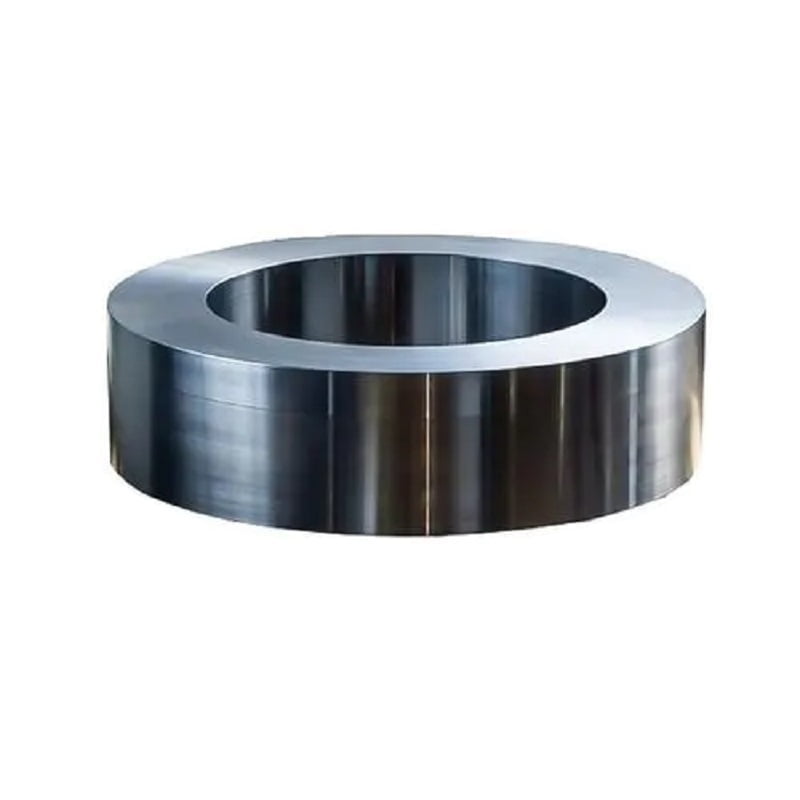
NIMONIC 90 e INCONEL 718 sono entrambe rinomate superleghe a base di nichel che mostrano prestazioni eccezionali in condizioni estreme, rendendole molto ricercate in varie applicazioni ad alto stress. Queste leghe sono appositamente progettate per fornire eccezionali proprietà meccaniche, resistenza all'ossidazione e maggiore durata in ambienti soggetti ad alte temperature e sostanze corrosive. La comprensione delle loro caratteristiche distinte è fondamentale per ingegneri e scienziati dei materiali quando selezionano il materiale appropriato per applicazioni impegnative. Gli aspetti chiave di NIMONIC 90 e INCONEL 718 includono:
Fabbricazione e lavorabilità: Sebbene entrambe le leghe possano essere saldate e lavorate, la loro lavorabilità differisce notevolmente, influenzando i processi di produzione.
Composizione: Entrambe le leghe sono composte principalmente da nichel ma differiscono negli elementi di lega, che ne influenzano le proprietà meccaniche e le prestazioni.
Proprietà meccaniche: Ciascuna lega offre elevati carichi di rottura e snervamento, con variazioni che soddisfano le esigenze specifiche del settore.
Caratteristiche di resistenza: Entrambe le leghe dimostrano un'eccellente resistenza alla corrosione e all'ossidazione, fondamentale per le applicazioni nel settore aerospaziale e nella produzione di energia.
Applicazioni: Trovano ampio utilizzo in componenti critici per settori quali quello aerospaziale, del petrolio e del gas e dell'energia nucleare.
Composizione
| Lega | Nichel (Ni) | Cromo (Cr) | Ferro (Fe) | Molibdeno (Mo) | Cobalto (Co) | Titanio (Ti) | Alluminio (Al) |
|---|---|---|---|---|---|---|---|
| NIMONIC 90 | 50-55% | 19-21% | Bal. | 5-6% | 15% | 00,5-1% | 3-4% |
| INCONEL 718 | 50-55% | 17-21% | Bal. | 2,8-3,4% | 5% | 00,7-1,5% | 00,2-0,8% |
Proprietà meccaniche
| Proprietà | NIMONIC 90 | INCONEL 718 |
|---|---|---|
| Densità | 8,2 g/cm³ | 8,19 g/cm³ |
| Resistenza alla trazione (temperatura ambiente) | ~950MPa | ~1000MPa |
| Resistenza allo snervamento (temperatura ambiente) | ~750MPa | ~900MPa |
| Intervallo di temperatura operativa | Fino a 980°C | Fino a 700°C |
| Allungamento (alla frattura) | 20% | 30% |
Resistenza alla corrosione e all'ossidazione
| Lega | Descrizione |
|---|---|
| NIMONIC 90 | Eccellente resistenza all'ossidazione, in particolare alle alte temperature, che lo rende ideale per componenti di turbine e scenari ad alto stress. |
| INCONEL 718 | Buona resistenza all'ossidazione e alla corrosione in una varietà di ambienti, in particolare nelle applicazioni aerospaziali e nel settore petrolifero e del gas. |
Applicazioni
| Industria | NIMONIC 90 Applicazioni | Applicazioni INCONEL 718 |
|---|---|---|
| Aerospaziale | Pale di turbine, camere di combustione e componenti ad alta temperatura | Motori aeronautici, turbine a gas e motori a razzo |
| Produzione di energia | Componenti di turbine a gas | Produzione di turbine e reattori |
| Olio e gas | Tubazioni e componenti downhole in ambienti ostili | Attrezzature di perforazione e componenti di valvole |
| Industria nucleare | Componenti del reattore, soprattutto dove è richiesta un'elevata resistenza | Utilizzato in recipienti a pressione e altri componenti critici del reattore |
Fabbricazione e lavorabilità
| Lega | Tecniche di fabbricazione | Lavorabilità |
|---|---|---|
| NIMONIC 90 | Saldatura, lavorazione meccanica, forgiatura | Moderato: può essere difficile da lavorare a causa della sua elevata resistenza. |
| INCONEL 718 | Saldatura, lavorazione, formatura | Buono – noto per la sua lavorabilità e buona saldabilità. |
Vantaggi
| Lega | Vantaggi |
|---|---|
| NIMONIC 90 | – Resistenza alle alte temperature e resistenza all’ossidazione. |
| – Buona lavorabilità ed elevata resistenza alla fatica termica. | |
| INCONEL 718 | – Eccellente resistenza alla corrosione in vari ambienti. |
| – Elevata resistenza allo snervamento e tenacità, che lo rendono adatto per applicazioni critiche. | |
| – Buona saldabilità e lavorabilità, consentendo processi di produzione versatili. |
Differenze
| Caratteristica | NIMONIC 90 | INCONEL 718 |
|---|---|---|
| Obiettivo primario | Progettato per applicazioni ad alta temperatura, in particolare negli ambienti aerospaziali e delle turbine. | Applicazioni versatili nell'industria aerospaziale, petrolifera e del gas e nucleare, con buona resistenza alla corrosione. |
| Variabilità della composizione | Un contenuto di cobalto più elevato migliora le prestazioni alle alte temperature. | Basso contenuto di nichel, bilanciato con altri elementi di lega per prestazioni complete. |
| Lavorabilità | Più difficile da lavorare a causa delle caratteristiche di resistenza. | Generalmente più facile da lavorare, adatto a geometrie e fabbricazione complesse. |
Questa analisi comparativa delinea le caratteristiche e le applicazioni principali di NIMONIC 90 e INCONEL 718, aiutando a determinare quale lega potrebbe essere più appropriata per specifiche esigenze ingegneristiche in base alle rispettive proprietà e vantaggi.

